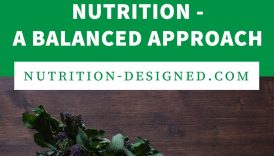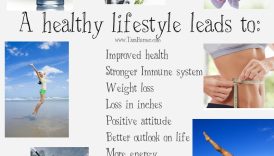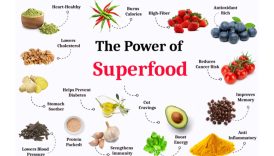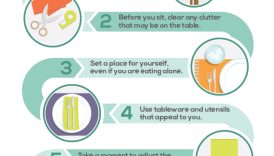The Ultimate Guide to Balancing Exercise and Nutrition for a Healthy Life
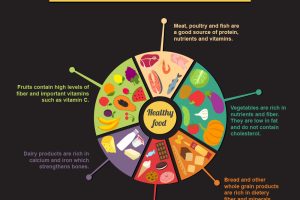
Importance of Balanced Exercise and Nutrition
In today’s fast-paced world, the significance of balancing exercise and nutrition cannot be overstated. Much like a well-tuned engine, the body requires both fuel and maintenance to function optimally. Nutrients from food are the fuel; they supply energy, repair tissues, and support bodily functions. Meanwhile, exercise serves as maintenance, ensuring that physical systems operate smoothly, keeping muscles strong and joints agile. Think about it: when Jane started incorporating a balanced diet rich in proteins, healthy fats, and complex carbohydrates, she noticed a surge in her energy levels. Gone were the mid-afternoon slumps that used to plague her. Instead, she found herself more productive and less reliant on sugary snacks. This stark contrast illustrates how balanced nutrition, combined with regular exercise, can transform one’s quality of life.
- The Ultimate Guide to Balancing Exercise and Nutrition for a Healthy Life
- Importance of Balanced Exercise and Nutrition
- Benefits of Maintaining a Healthy Lifestyle
- Understanding Macronutrients
- Protein, Carbohydrates, and Fats
- Recommended Daily Intake
- Designing a Fitness Plan
- Setting Realistic Goals
- Choosing the Right Workout Routine
- Creating a Balanced Diet Plan
- Planning Nutrient-Rich Meals
- Incorporating Variety for Optimal Health
- Hydration and Its Impact on Overall Wellness
- Importance of Staying Hydrated
- Hydration Guidelines for Active Individuals
- Supplements for Enhanced Performance
- Key Supplements for Fitness Enthusiasts
- Safely Incorporating Supplements into Your Routine
Benefits of Maintaining a Healthy Lifestyle
The benefits of committing to a healthy lifestyle extend well beyond the surface. They encompass physical, mental, and emotional well-being. Here are some advantages worth noting:
- Improved Physical Health: Regular exercise combined with nutritious eating helps maintain a healthy weight, reduces the risk of chronic diseases (like heart disease and diabetes), and boosts immune function.
- Enhanced Mental Clarity: A well-nourished brain performs better. Healthy foods can improve memory, cognitive ability, and concentration.
- Boosted Confidence and Self-Esteem: Achieving fitness goals and savoring nutritious meals can lead to a sense of accomplishment, boosting self-esteem and confidence.
- Increased Longevity: Consistent physical activity and smart eating habits can add years to one’s life, promoting a more vibrant, fulfilling existence.
In essence, the journey toward a healthy lifestyle begins with the commitment to balanced exercise and nutrition, paving the way for a future brimming with vitality.
Understanding Macronutrients
Protein, Carbohydrates, and Fats
Let’s dive into the three fundamental macronutrients: protein, carbohydrates, and fats. Each plays a unique role in maintaining a healthy body, and understanding them can help tailor your diet for optimal results.
- Protein: Often referred to as the building blocks of the body, proteins are essential for muscle repair, hormone production, and overall growth. Sources include lean meats, fish, eggs, dairy products, legumes, and nuts. Esteemed athletes often emphasize protein intake to support muscle recovery and performance.
- Carbohydrates: These are the body’s primary energy source. They fuel workouts and daily activities. Carbs can be found in foods like whole grains, fruits, and vegetables. It’s wise to opt for complex carbohydrates over simple sugars to maintain steady energy levels.
- Fats: While often misunderstood, healthy fats are vital for hormone production, nutrient absorption, and brain health. Incorporating sources like avocados, nuts, seeds, and olive oil can promote heart health.
Recently, Dave, a fitness enthusiast, switched to a more balanced approach by monitoring his macronutrient intake. He learned that not all fats are bad, and that a diet rich in healthy fats actually helped him recover faster from workouts.
Recommended Daily Intake
Now, how much of each macronutrient should one consume daily? While individual needs vary, general guidelines can be helpful:
- Protein: Aim for about 10-35% of your total daily calories. This translates to roughly 46 grams for women and 56 grams for men.
- Carbohydrates: Generally, 45-65% of your total calories should come from carbs, focusing on whole grains, fruits, and vegetables.
- Fats: Healthy fats should make up 20-35% of your total daily intake, emphasizing unsaturated fats.
Creating a balanced diet that includes these macronutrients allows the body to perform at its best, leading you one step closer to achieving your health and fitness goals.
Designing a Fitness Plan
Setting Realistic Goals
Transitioning into a fitness plan requires setting realistic goals that serve as your roadmap. Claire, a busy professional, faced the common pitfall of setting overly ambitious objectives. After struggling for weeks, she learned the importance of smart goal setting. Realistic goals should be:
- Specific: Instead of saying, “I want to get fit,” Claire shifted to, “I want to exercise for 30 minutes, five times a week.”
- Measurable: Having quantifiable outcomes makes tracking progress easier. For instance, “I want to lose 10 pounds in three months” provides a clear target.
- Achievable: Unrealistic expectations can lead to burnout and frustration. Ensure your goals are something you can realistically accomplish with your current commitments.
- Relevant: Set goals that resonate with your personal lifestyle. If you enjoy cycling, incorporating it into your fitness plan will make it more enjoyable.
- Time-bound: Setting a deadline enhances motivation. Instead of an open-ended goal, specify a timeframe, such as, “I’ll complete a 5K in six weeks.”
Choosing the Right Workout Routine
Once your goals are established, selecting the right workout routine becomes essential to achieving them. Consider your preferences, lifestyle, and fitness level.
- Cardiovascular Exercises: Activities like jogging, cycling, or swimming elevate the heart rate and are excellent for burning calories. For instance, if you enjoy outdoor activities, a mix of jogging and hiking might be ideal.
- Strength Training: Incorporating weights help build muscle and increase metabolism. Many find that using resistance bands or bodyweight exercises can be a great starting point, especially for beginners.
- Flexibility and Balance: Don’t overlook the importance of yoga or pilates. They enhance flexibility, reduce injury risk, and improve overall balance — additional benefits for a well-rounded fitness approach.
By setting realistic goals and choosing an enjoyable workout routine, individuals can foster consistent progress, making fitness an integral part of their lives.
Creating a Balanced Diet Plan
Planning Nutrient-Rich Meals
As you embark on your fitness journey, a crucial component is creating a balanced diet plan filled with nutrient-rich meals. It’s not just about eating less; it’s about eating right. Aiming for meals that are packed with essential vitamins, minerals, and macronutrients will fuel your body effectively. Consider Bella, who found that meal planning transformed her approach to nutrition. She began each week by organizing her meals, opting for wholesome ingredients that not only satisfied her taste buds but also nourished her body:
- Proteins: Include lean meats, fish, eggs, legumes, and dairy to provide the foundational building blocks for muscle and repair.
- Carbohydrates: Focus on complex carbohydrates like brown rice, quinoa, and sweet potatoes to provide sustained energy.
- Fruits and Vegetables: Aim to fill half your plate with colorful fruits and veggies, ensuring a wide range of nutrients and antioxidants.
- Healthy Fats: Don’t shy away from sources like avocados, nuts, and olive oil, which can contribute to heart health and overall wellbeing.
Incorporating Variety for Optimal Health
Variety is the spice of life, especially when it comes to your diet. Eating a wide range of foods ensures you receive the array of nutrients your body needs to thrive. It also keeps meals exciting!
- Experiment with Different Cuisines: Diversifying your culinary experiences can introduce you to a wealth of flavors and ingredients. Try cooking Mediterranean one night and Asian the next.
- Rotate Ingredients: Instead of having the same meals weekly, swap out ingredients. For example, if you use chicken in your salad one week, switch to chickpeas the following week.
- Seasonal Eating: Incorporating seasonal produce not only provides freshness but also heightens the flavor of your dishes while supporting local agriculture.
By planning nutrient-rich meals and embracing variety, individuals can create a sustainable balanced diet plan that ultimately supports overall health and well-being while keeping meals enjoyable.
Hydration and Its Impact on Overall Wellness
Importance of Staying Hydrated
As you continue to establish a balanced diet and fitness routine, it’s essential not to overlook the impact of hydration on overall wellness. Staying hydrated is crucial for nearly every physiological process in the body. It influences everything from mood and energy levels to digestion and physical performance. Let’s consider Mark, an avid fitness enthusiast who discovered that proper hydration dramatically improved his workouts. Initially, he struggled with fatigue and muscle cramps, which he attributed to high-intensity training. Once he prioritized drinking enough water, he noticed a significant difference in his endurance and recovery:
- Enhanced Physical Performance: Dehydration can lead to decreased strength, power, and endurance. By staying hydrated, you maintain peak physical capabilities.
- Cognitive Function: Even mild dehydration can affect concentration and alertness, making it hard to stay focused on tasks or workouts.
- Temperature Regulation: Adequate hydration helps regulate body temperature, particularly during physical activity, reducing the risk of overheating.
Hydration Guidelines for Active Individuals
For those who lead active lifestyles, adhering to hydration guidelines can make a noteworthy difference. Here are some best practices:
- Daily Intake: Aim for at least 8-10 cups (64-80 ounces) of water a day, adjusting based on individual needs and activity levels.
- Pre-Workout Hydration: Drink 16-20 ounces of water about two hours before exercising, followed by another 8-10 ounces closer to workout time.
- During Exercise: For activities lasting over an hour, consider sipping on sports drinks with electrolytes to replenish lost minerals.
- Post-Exercise Hydration: Rehydrate with 16-24 ounces of water within 30 minutes after your workout to aid recovery.
By implementing these hydration guidelines, active individuals can significantly enhance their performance and support their overall health. Staying hydrated isn’t just an additional task; it’s a fundamental aspect of a healthy lifestyle that complements nutrition and exercise, paving the way for optimal wellness.
Supplements for Enhanced Performance
Key Supplements for Fitness Enthusiasts
As you journey deeper into your fitness routine, you might consider incorporating supplements to enhance performance and recovery. While the foundation of any good fitness plan is proper nutrition, certain supplements can help bridge the gaps and support your goals. Take Rachel, who, after months of diligent training, decided to add supplements to her regimen. She found that the right choices made a noticeable impact on her performance and recovery:
- Protein Powder: A staple for anyone looking to build muscle, protein powder provides a convenient way to ensure adequate intake, especially post-workout.
- Creatine: Known for improving strength and power, creatine helps replenish ATP, the primary energy carrier in your muscles during intense exercise.
- Branched-Chain Amino Acids (BCAAs): These are excellent for reducing muscle soreness and fatigue. Rachel noticed her recovery time reduced significantly after introducing BCAAs into her routine.
- Omega-3 Fatty Acids: Not only beneficial for joint health, omega-3s can help reduce inflammation in the body, making them a perfect addition for active individuals.
Safely Incorporating Supplements into Your Routine
While supplements can be beneficial, it’s essential to integrate them into your routine safely. Here are some great tips based on Rachel’s experience to consider:
- Consult a Healthcare Professional: Before starting any supplement, it’s wise to consult with a doctor or licensed nutritionist. They can provide personalized advice based on your health history and goals.
- Research Quality Brands: Look for brands that are transparent about their ingredients and have third-party testing. Ensuring purity and efficacy is key.
- Start Slow: Introduce one supplement at a time. This approach helps you monitor its effects on your body without overwhelming your system.
- Stay Within Recommended Doses: More isn’t always better. Stick to recommended dosages—many benefits can be gained without excessive intake.
By focusing on the right supplements and integrating them safely into a balanced diet and workout routine, fitness enthusiasts can enjoy enhanced performance while minimizing potential risks. Remember, supplements should enhance, not replace, a well-rounded fitness and nutrition plan.

